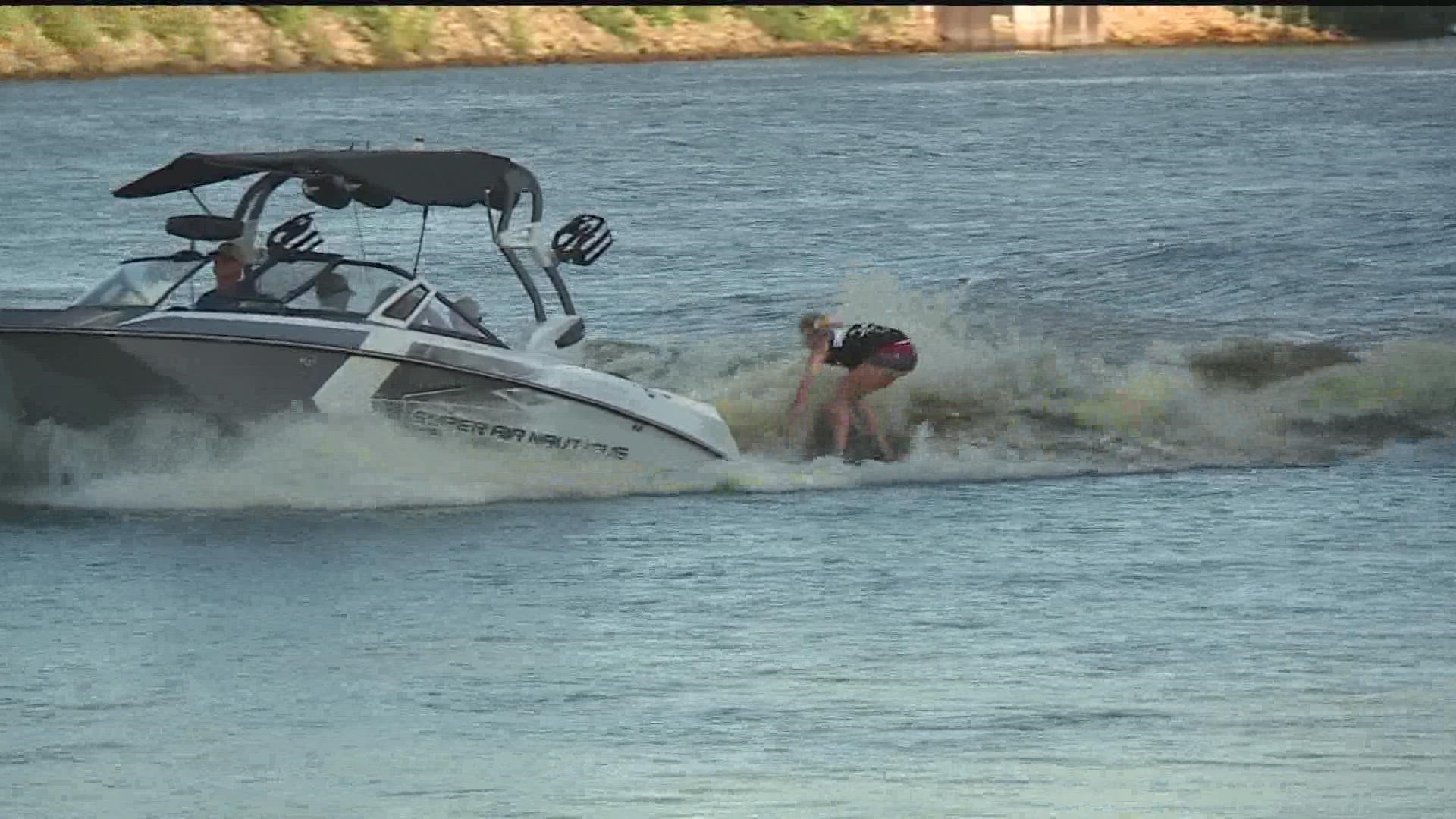MINNEAPOLIS — There’s been a lot of debate lately about wake boats and the power of the waves they create. A new study by researchers at the University of Minnesota's St. Anthony Falls Laboratory studied the difference between wake boat waves and those created by traditional recreational boats.
Although the study didn’t measure the effects on shorelines, it did determine wake boats require a greater distance from shore to reduce the potential impact of their large waves.
Jeff Marr, part of the U of M research team, says surfing boats are designed to plow water. "The bow of the boat is typically pretty high, the stern is pretty deep, and the hull is actually pushing water,” Marr said.
The U of M researchers examined data measuring the maximum height, total energy, and maximum power of the waves produced by four boats. The findings reveal wake waves from wake boats are higher and require greater distance to decrease from more typical recreational boats. “The energy of these boats, of wake surf boats, is three to six times larger than traditional boats, and six to twelve times larger in terms of power,” said Marr.
Using a ruler, measuring tape, level and flags, Jeff offers a crude demo on what it means for the shoreline when it comes to those waves rolling in.
First, we look at a water ski boat, travelling between 20 and 30 miles an hour pulling a water skier. The study shows at 200 feet away from this shoreline those waves would be four to five inches high, compared to the 12-inch wave height a wake boat will make. This results in the wave rising at least three feet higher on the shoreline.
Since larger, more energetic waves need to travel a greater distance to lose height and power – the study indicates if a wake boat is five to 600 feet from shore, the wave levels will be similar to a ski boat or cruiser 200 feet from the shoreline.
Marr, who is an avid boat user himself wants to make sure people know the goal of the study is not to limit boat usage. “Minnesota lakes are really a national treasure, and we need information that’s unbiased and that’s what the university does – we generate data that will let people make decisions,” he said.
Watch the latest coverage from the KARE11 Sunrise in our YouTube playlist:

